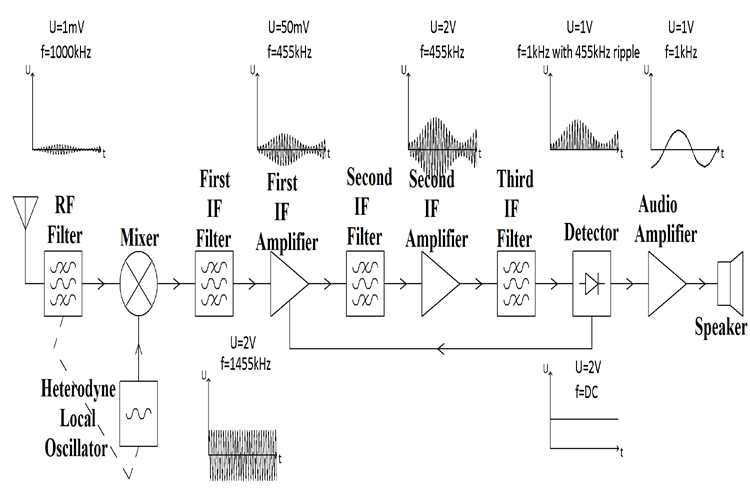The circuit you show uses a parallel tuned circuit, in series with the antenna; that would reject the frequency it was tuned to rather than select it.
A parallel tuned circuit should connect between antenna and ground, as in the example I posted.
In reality, the antenna would usually either connect to a tap on the main coil, or a coupling coil with far less turns, around the main coil - eg. as in the antenna & first tuned circuit in the example below.
Connecting to the tuned circuit coil at a tap neared the grounded end improves tuning selectivity, whereas anything external connecting to the top "damps" the resonance, like touching a guitar string near the middle rather than a fixed end.
A normal opamp would only work as an amplifier at fairly low (audio) frequencies; if you are trying to receive radio signals you would need to amplify the signal with either suitable transistors or appropriate RF ICs.
A transformer can change voltage and impedance, but with loss of power, they are never 100% efficient.
I'm not sure what the purpose of that is supposed to be?
What frequency or frequency range are you trying to receive?





